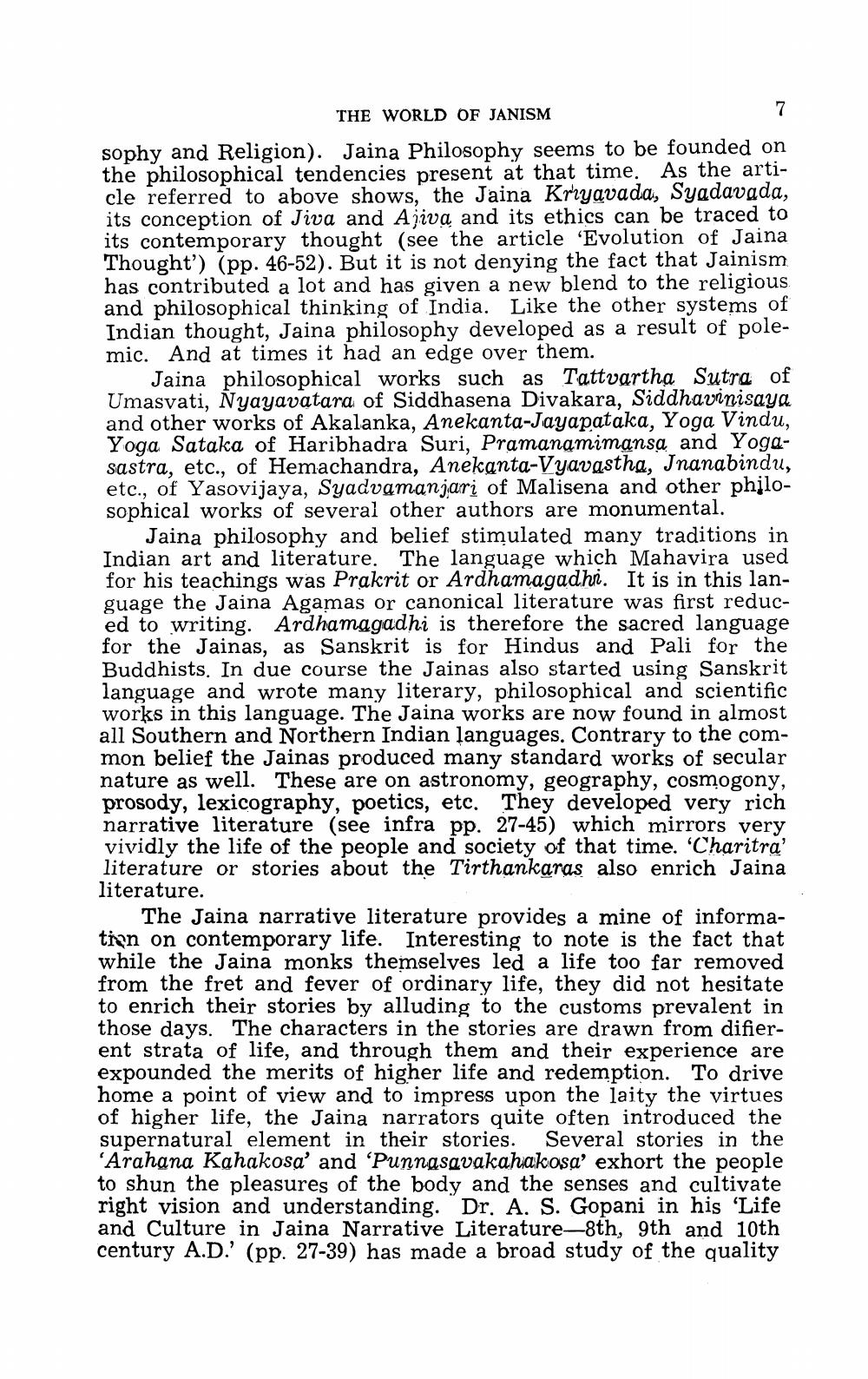Book Title: World Of Jainism Author(s): Vishwanath Pandey Publisher: Vishwanath Pandey View full book textPage 9
________________ THE WORLD OF JANISM sophy and Religion). Jaina Philosophy seems to be founded on the philosophical tendencies present at that time. As the article referred to above shows, the Jaina Kriyavada, Syadavada, its conception of Jiva and Aiva and its ethics can be traced to its contemporary thought (see the article 'Evolution of Jaina Thought') (pp. 46-52). But it is not denying the fact that Jainism has contributed a lot and has given a new blend to the religious and philosophical thinking of India. Like the other systems of Indian thought, Jaina philosophy developed as a result of polemic. And at times it had an edge over them. Jaina philosophical works such as Tattvartha Sutra of Umasvati, Nyayavatara of Siddhasena Divakara, Siddhavinisaya and other works of Akalanka, Anekanta-Jayapataka, Yoga Vindu, Yoga Sataka of Haribhadra Suri, Pramanamimansa and Yogasastra, etc., of Hemachandra, Anekanta-Vyavastha, Jnanabindu, etc., of Yasovijaya, Syadvamanjari of Malisena and other philosophical works of several other authors are monumental. Jaina philosophy and belief stimulated many traditions in Indian art and literature. The language which Mahavira used for his teachings was Prakrit or Ardhamagadhi. It is in this language the Jaina Agamas or canonical literature was first reduced to writing. Ardhamagadhi is therefore the sacred language for the Jainas, as Sanskrit is for Hindus and Pali for the Buddhists. In due course the Jainas also started using Sanskrit language and wrote many literary, philosophical and scientific works in this language. The Jaina works are now found in almost all Southern and Northern Indian languages. Contrary to the common belief the Jainas produced many standard works of secular nature as well. These are on astronomy, geography, cosmogony, prosody, lexicography, poetics, etc. They developed very rich narrative literature (see infra pp. 27-45) which mirrors very vividly the life of the people and society of that time. 'Charitra' literature or stories about the Tirthankaras also enrich Jaina literature. The Jaina narrative literature provides a mine of informatian on contemporary life. Interesting to note is the fact that while the Jaina monks themselves led a life too far removed from the fret and fever of ordinary life, they did not hesitate to enrich their stories by alluding to the customs prevalent in those days. The characters in the stories are drawn from difierent strata of life, and through them and their experience are expounded the merits of higher life and redemption. To drive home a point of view and to impress upon the laity the virtues of higher life, the Jaina narrators quite often introduced the supernatural element in their stories. Several stories in the 'Arahana Kahakosa' and 'Punnasavakahakosa' exhort the people to shun the pleasures of the body and the senses and cultivate right vision and understanding. Dr. A. S. Gopani in his 'Life and Culture in Jaina Narrative Literature—8th, 9th and 10th century A.D.' (pp. 27-39) has made a broad study of the qualityPage Navigation
1 ... 7 8 9 10 11 12 13 14 15 16 17 18 19 20 21 22 23 24 25 26 27 28 29 30 31 32 33 34 35 36 37 38 39 40 41 42 43 44 45 46 47 48 49 50 51 52 53 54 55 56 57 58 59 60 61 62 63 64 65 66 67 68 69 70 71 72 73 74 75 76 77 78 79 80 81 82 83 84 85 86 87 88 89 90 91 92 ... 132
